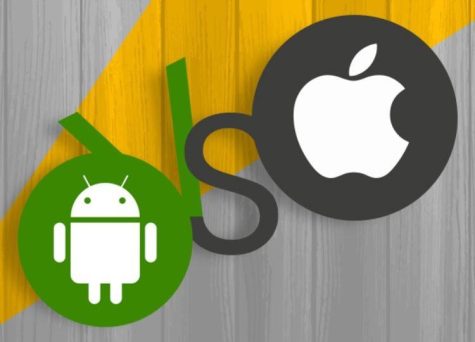iOS Apps VS Android Apps: What to Build
January 6, 2023
iOS and Android apps are the two most popular platforms on the web today, and developers face the difficult decision of where best to focus their efforts. Android enjoys a larger market share of overall users thanks to its open-source platform and ubiquity across devices. At the same time, iOS offers developers a range of potential benefits, such as higher download rates and monetization potential. Making an informed decision over which platform best matches your desired outcome relies upon having access to best-in-class mobile app development services from experienced and creative best Android developers or iOS developers.
iOS and Android each have their own unique sets of strengths and weaknesses, so the decision between which platform to build your app for can be tricky. Remember that understanding the ever-evolving mobile technology market is crucial in making your decision; research should play a key role in helping you choose what kind of app to build. In this article, we will explore some differences between iOS and Android apps that will aid you in making the right decision.

Differences in Programming Languages
When deciding whether to create an iPhone app or an Android app, the first thing to consider is the difference between their respective programming languages. iOS apps use Swift or Objective-C, while Android apps employ Java and Kotlin. Each language has unique benefits and applications, so it’s important to explore them before deciding. Neither language is better than the other; instead, they are built on different core principles that make them suitable for achieving specific outcomes.
For instance, Swift is easier to learn if you want to create a basic yet functional program, while Objective-C may be more advanced but also offers a longer development lifespan. On the flip side, Java provides a broader range of features for creating complex applications.
At the same time, Kotlin is incredibly lightweight and performs well with short development cycles, making it great for modern app needs. Ultimately, each of these languages has its strengths which should be weighed to create the best experience for your users.
Change In Development Environment
With the ever-changing development environment and the constant struggle between iOS and Android, choosing what app to develop can be tricky. It certainly helps to familiarize yourself with the pros and cons of each platform since every application has its requirements and target audience.
Android apps boast a larger install base than iOS, which means greater reach for the developer, but at the cost of more fragmented software requirements. Conversely, iOS apps have consistent hardware requirements, and their users are usually willing to pay extra for quality applications. Ultimately, it comes down to understanding your product’s unique needs to pick what platform fits best.
System-Specific Design Differences
To get the most out of your mobile app, it’s essential to remember that iOS and Android have different design specifications. For instance, widgets are only for Android, while iOS apps use a static grid system for arranging content. App lengths can differ too, Android allows longer apps, but iOS prefers shorter ones due to constraints within the App Store.
Keywords also play a major role in successful apps on both platforms, yet in Android, they must be localized, while iOS requires generic terms. With careful consideration of design distinctions between Android and iOS, you’ll be well on your way to developing an engaging app, no matter what system it’s built for.
Development Complexity in Each Platform
When it comes to developing apps for iOS and Android, complexity levels vary by platform. Building an app for iOS is generally a more intense development project. Not only does the coding process get quite complicated, but the App Store also has a strict quality assurance process that can take longer to meet.
On the other hand, building an app on the Android side tends to have a slightly less steep learning curve and may involve less time going through tests and reviews. This makes it easier to quickly bring an Android app up to speed, perfect for tight timelines. Understanding both platforms is essential to create an impactful product that speaks to both audiences.
Performance and Accessibility of Apps
Mobile app development can be tricky due to the sheer number of potential users. iPhones and Android phones are both vying for the attention of these users. When choosing to build for iOS vs. Android apps, one should consider how performance and accessibility play into the selection.
Many believe Android has better accessibility with its custom icons, widgets, and launchers; however, Apple’s iOS typically offers better performance that caters to gamers, photographers, and other content creators who prioritize processing speeds.
The decision of which one to go with should depend on your market; if you are targeting a professional crowd, then iOS may be preferable, while a more casual demographic could benefit from the level of customization offered by Android devices. Ultimately it’s essential to keep in mind performance and accessibility when making this decision.
Cost Of Development
The cost of developing iOS and Android apps mainly depends on the project’s complexity. Generally speaking, though, building an iOS app will be at a slightly higher price tag than an Android app. That’s because creating OpenGL technology on the Android platform can be expensive, while Apple already includes such technology in their packages.
That said, it is essential to consider that monthly costs can vary drastically between maintaining two different platforms; as such, think long and hard before deciding which platform to go with.










